Top 10 Most Beautiful Historical Sites in Tunisia
Tunisia's strategic location along the Mediterranean Sea coast has attracted inhabitants and conquerors throughout history. Similarly, its proximity to the ... read more...Sahara has brought its people into touch with African interior dwellers. The long history of Tunisia has resulted in a superb array of historic sites to see. Let’s discover the most beautiful historical sites in Tunisia now!
-
Carthage was one of the ancient world's most powerful towns, creating the mighty Carthaginian Empire, which dominated most of the western Mediterranean as an important – and consequently prosperous – commercial hub. Carthage was a pivotal figure in ancient world history. According to legend, the city was built in the 9th century BC by the Phoenician Queen Dido, and the ancient metropolis rose to prominence over the next 500 years.
However, Carthage was eventually defeated and destroyed in 146 BC as a result of three long and terrible conflicts with Rome known as the Punic Wars. It is even said that the Romans salted the land so that no one could dwell on the once-dominant city's site.
Time has taken its toll on the site, and today there are few traces of ancient Carthage scattered across a large region. Byrsa Hill and the Carthage Museum are perhaps the best places to start investigating these remains. The museum houses a collection of Carthaginian (Punic) and Roman artifacts, including marble sarcophagi and a large model of Punic Carthage that lets visitors visualize the ancient city.
Location: Latin Carthago
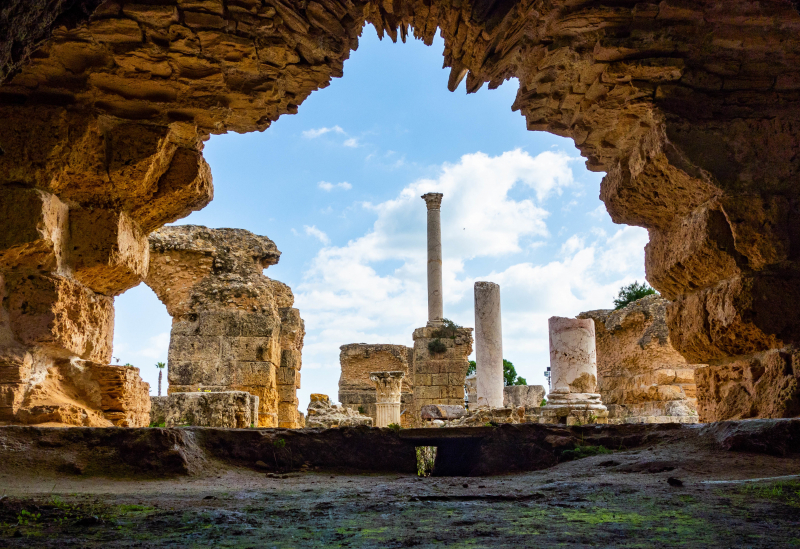
Source: Wikipedia Source: HistoryMarche -
Dougga - one of the most beautiful historical sites in Tunisia, is home to the exceptionally well-preserved ruins of an ancient site that was once home to a variety of cultures, including the Numidians, Punics, ancient Greeks, and Romans.
Dougga was designated as a World Heritage Site by UNESCO in 1997 due to its exceptional level of preservation and diverse cultural influences. Dougga is one of Africa's most stunning archaeological sites, with a wealth of fascinating sites. Make time to see Dougga's spectacular remains, which span 70 hectares and include the theater, an amphitheater, and temples dedicated to Juno Caelestis and Saturn.
Pass beneath Alexander Severus' triumphal Arch and into the shadow of the towering Capitole, which was completed around 166 AD. The temple is in excellent shape, with ten-meter-high walls decorated with fluted columns and a colossal figure of Jupiter originally housed within. A carved frieze showing Emperor Antonius Pius being carried away by eagles can be seen if you look closely.
Location: Teboursouk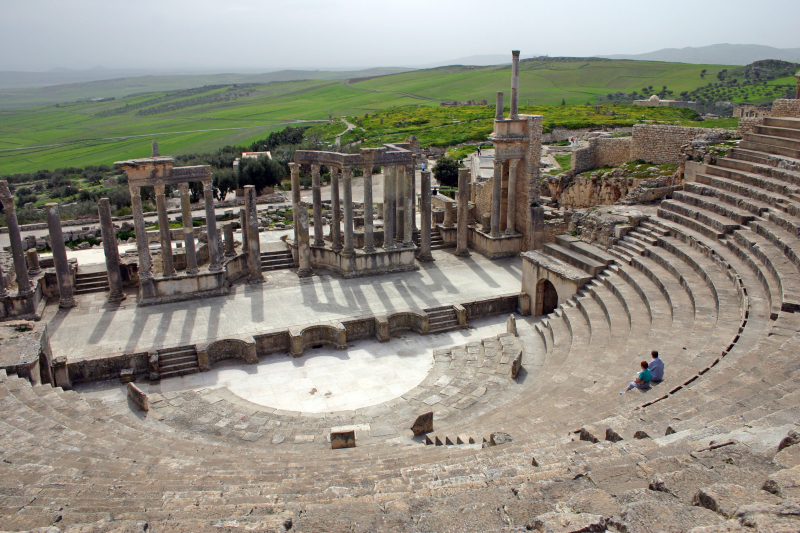
Source: Wikipedia Source: Discover Tunisia -
Enfidaville War Cemetery is a World War II Commonwealth cemetery in Tunisia that contains the graves of 1,551 men who died during the North African Campaign, specifically the Tunisia Campaign. Eighty-eight of the burials are unidentified. From 1942 to 1943, the Tunisia Campaign was fought between Allied and Axis forces. Near the end of the campaign, the area where the Enfidaville War Cemetery is located, as well as the adjacent area of Tarkouna, witnessed particularly heavy fighting, with the majority of those buried there having died between March and May 1943.
The Enfidaville War Cemetery is now open 24 hours a day, seven days a week. Please keep in mind that the register and visitor's book will only be available during business hours. Visitors will find 8 burial plots with clean lines of grave markers in a spacious and open space.
The 'Stone of Remembrance,' etched with the words 'their name liveth for evermore,' greets you as you enter. The 'Plaque of Sacrifice,' an obelisk monument topped by a cross, stands in the center of the graves. Eight Jewish males are known to have been buried among the victims.
Location: Enfidha
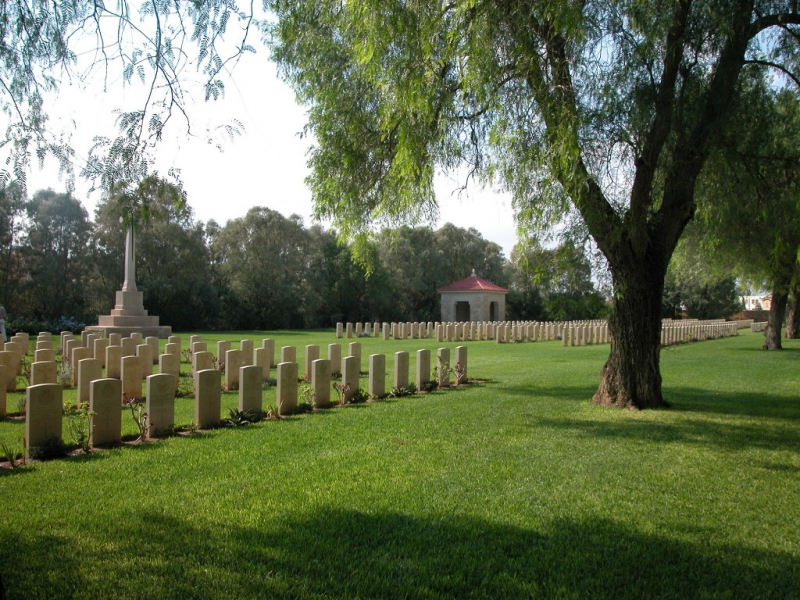
Source: cwgc.org 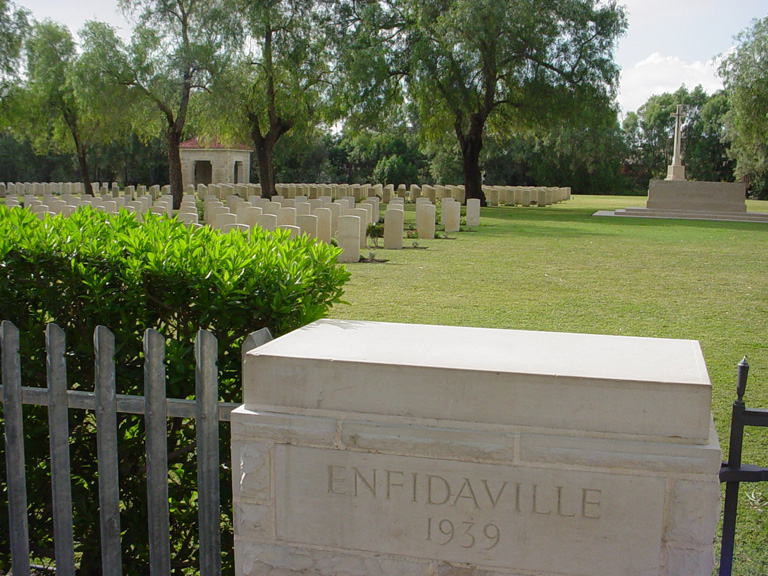
Source: cwgc.org -
The El Djem Amphitheater (El Djem), also known as Thysdrus Amphitheater after the old Roman city in the area, is located in a tranquil Tunisian town. El Jem's main attraction is an exceptionally enormous and well-preserved Roman amphitheater that attracts people from all over the world. This is one of the most beautiful historical sites in Tunisia.
UNESCO has designated El Djem as a World Heritage Site since 1979, despite the fact that it is one of the most evocative Ancient Roman constructions in the world. This old treasure was also featured in Monty Python's film 'Life of Brian.'
Today, you enter El Jem amphitheater by descending a set of steps that resemble stadium seats. Explore every nook and cranny of the old stadium, from the underground corridors where animals were kept ready for games to the arena where gladiators would have fought them. You can also take a guided tour to learn more about the history of the theater. Otherwise, take your time seeing the site before arriving at the modest shop for a souvenir.
Location: El Djem
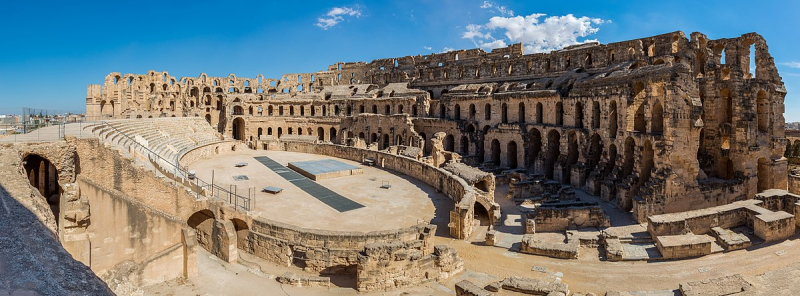
Source: Wikipedia Source: One Man Wolf Pack -
Following the collapse of Carthage in the 7th century, the Medina of Tunis prospered in the 12th century under the authority of the Almohad Dynasty, then the Hafsid Dynasty until the 16th century, both Berber dynasties. Tunis was a vibrant center of business and culture at the period, and the result is an astonishing collection of mosques, palaces, and monuments that can still be seen today.
Visitors today enter Tunis's Medina through the Bab el Bahr, also known as the Porte de France, a reminder of Tunis's period as a French colony (1881-1956). The importance of the Tunis of Medina waned as the city grew during the French occupation. A map of the Tunis of Medina is located near the gate, letting tourists gain their bearings, while orange markers pointing to various sites may be found throughout. One of our Top 10 Tunisian Tourist Attractions is the Medina of Tunis, which is a UNESCO World Heritage Site.
Location: Tunis
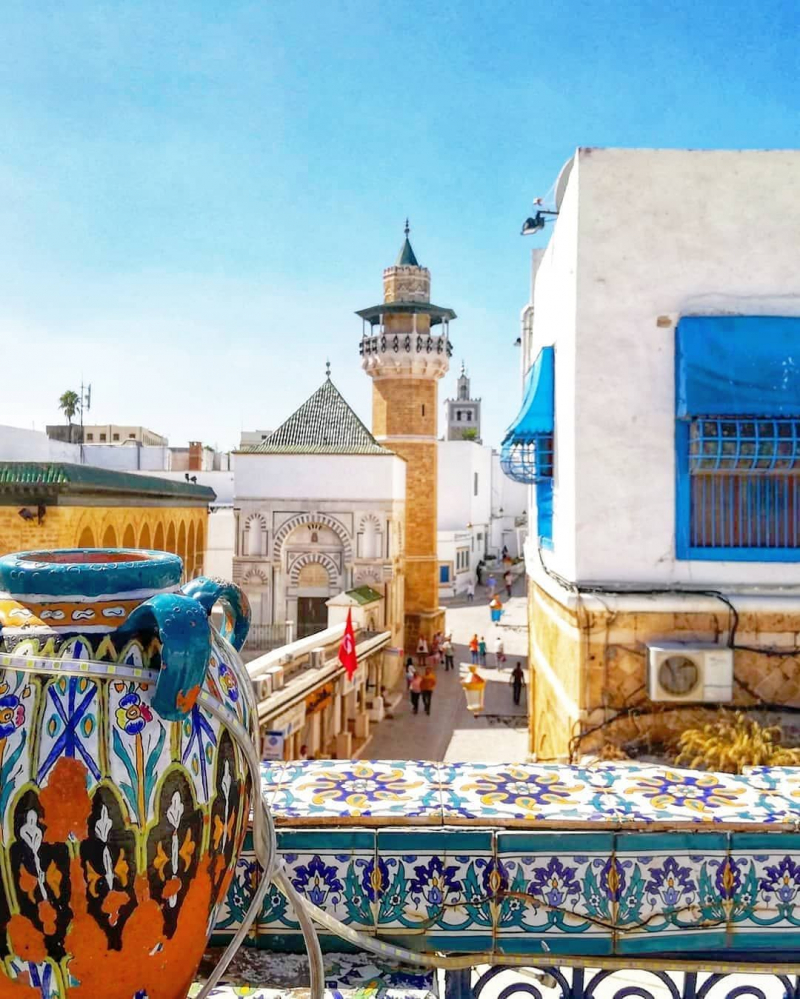
Source: Pinterest Source: Discover Tunisia -
The ruins of a large number of children's graves dating back to Carthage's Punic period can be found in Tunisia's Sanctuary of Tophet. Historians disagree on whether the Carthaginians practiced child sacrifice during times of great famine, and if so, how many of the tombs at Tophet are those of sacrificed children.
The Tophet of Salammbo dates from Queen Alyssa or Dido's establishment of the city in the 19th century BC until the Roman Republic destroyed it in the Third Punic War in 146 BC. Carthage was the capital of the Punic civilization, which had grown from a Phoenician colony to a Punic empire. The name 'tophet' derives from the Hebrew Bible and refers to a 'burning area.'
Today, this haunting location, which covers about an acre of land near Tunis's Punic Port, may be found. Under the shade of palm trees, you can walk among the stelae, viewing the inscriptions and sculptures of the ancient grave markers while escaping Tunisia's hot summer temperatures. This is one of the most beautiful historical sites in Tunisia.
Location: Gehenna
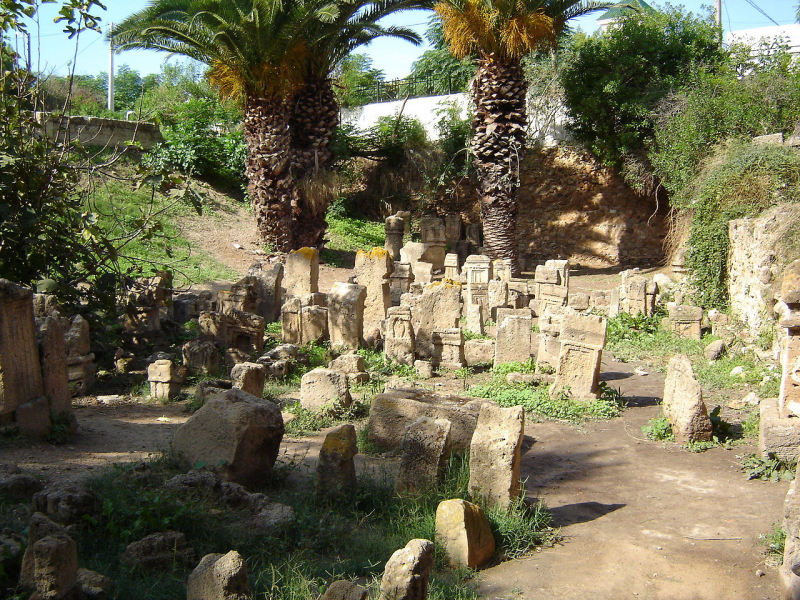
Source: Torch.uk Source: TUNISIE. co -
The Bardo Museum in Tunis is Tunisia's national archaeological museum, with exhibits spanning the country's history. The Bardo Museum, which is located in a magnificent palace complex, has a lengthy history of its own. The palace was established in the 13th century by the Hafside Dynasty and afterwards rebuilt in the 17th and 18th centuries.
From prehistoric artifacts to Punic ceremonial objects thought to be linked to human sacrifice traditions, the Bardo Museum provides a comprehensive perspective of Tunisia's historical and cultural development.
The mosaics in the Bardo Museum are vibrant and complex, depicting everything from nautical scenes of boats and fish to figures of deities and tales. Virgil's mosaic, which depicts the Muses of Tragedy and History, is one of the most well-known. The museum's old palace buildings are now linked by a stunning contemporary annexe that has increased the exhibition space. The Bardo Museum is also one of our Top 10 Tunisian Tourist Attractions.
Location: Tunis
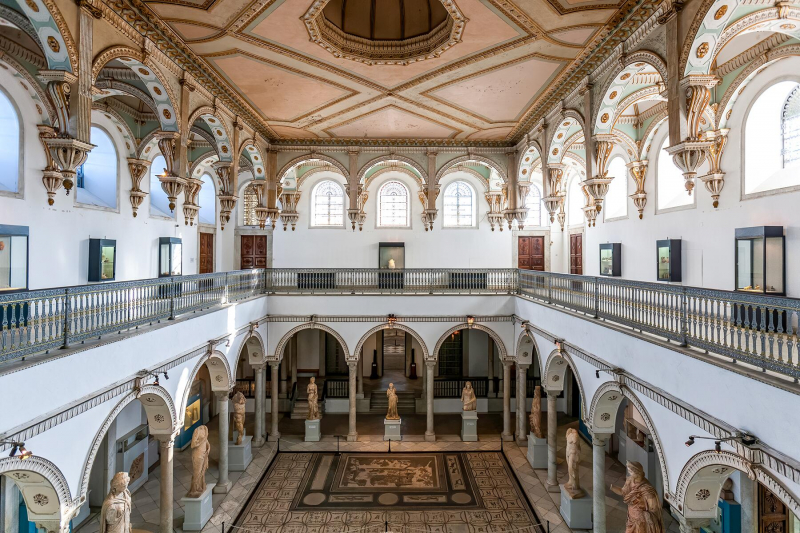
Source: Fodors.com Source: XtremeCollectionS -
Bulla Regia is a magnificent Ancient Roman archaeological site in Tunisia featuring subterranean villas and other artifacts. Under Julius Caesar, Tunisia was absorbed into the Roman Empire in around 46 BC. Bulla Regia flourished under the Romans, who built a succession of monuments and public facilities in the area, including its amphitheatre, which was formerly a Berber site.
The famed two-story villas of Bulla Regia are among the ruins, with the lower floor buried underground to shelter its inhabitants from the elements. The fact that many of these villas still have genuine Roman mosaics is another distinguishing feature.
Bulla Regia is now an archaeological site with a tiny museum, offering a once-in-a-lifetime opportunity to step into a Roman villa without having to use your imagination. The place does not appear to be particularly noteworthy from above. The gigantic Memmian Baths, which overlook the entrance, as well as the Quartier des Maisons (villas area) and the spectacular House of the Hunt, demonstrate the past inhabitants' opulent lifestyle.
Location: Jendouba
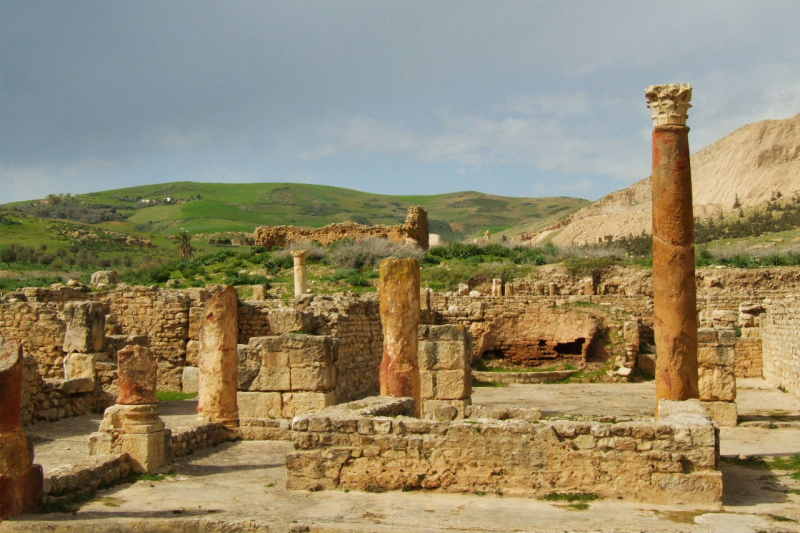
Source: Wikipedia Source: TunisiaTourismTV -
One of the most beautiful historical sites in Tunisia, Sbeitla, was once a thriving ancient city whose stunning ruins are among the world's best Roman ruins. From the 1st century AD, this unusual site, also known as Sufetula, thrived as a Roman settlement, thanks in part to its temperate Mediterranean environment, which proved suitable for olive-growing. Sufetula thrived long after many of her rivals did, and by the fourth century, the city had established itself as a major Christian center.
Sufetula is a fantastic half-day (or full-day) expedition, depending on your level of excitement. Purchase tickets to the archaeological site and museum at the Complexe Touristique, which explores the area's history and houses a collection of smaller Sbeitla artifacts.
Because there isn't much signage around the site, it's a good idea to bring a guidebook or do some research before you go. Guides don't hang out here because it's so far out, and most visitors bring their own guides.
Location: Sbeitla
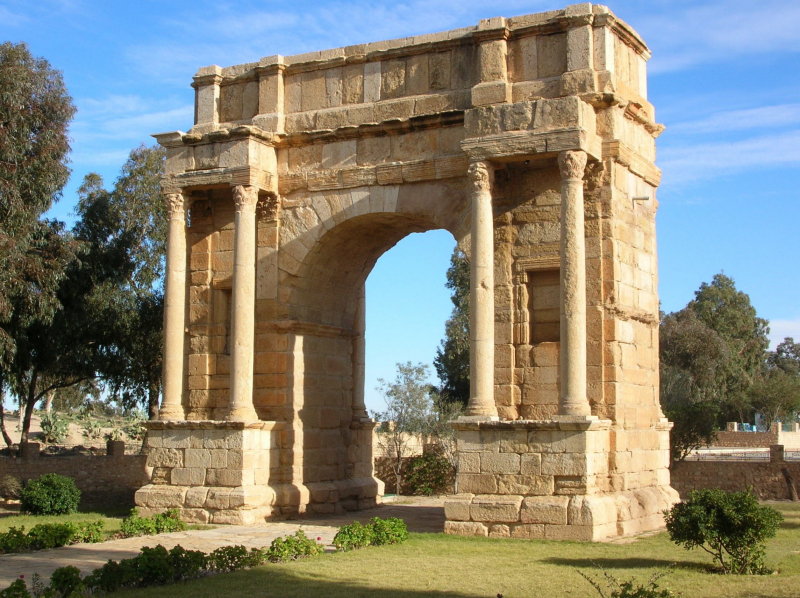
Source: Wikipedia Source: TunisiaTourismTV -
The Antonine Baths were a massive Roman bath complex in ancient Carthage, Tunisia, that was the largest set of Roman thermae built on the African continent and one of the three largest built in the Roman Empire. The well-preserved ruins are now a well-visited UNESCO World Heritage Site. Although the baths were once many storeys tall, the ruins that can still be seen now are mostly from the lower levels. Nonetheless, based on what is still visible, it is easy to picture the enormity and majesty that the baths would have commanded.
To the southwest, archaeologists unearthed a large semi-circular structure with roughly 80 seats, which they initially mistook for a theater until realizing it was actually a public latrine!
The intriguing ruins of the Antonine Baths are well worth visiting and are surrounded by natural beauty, with the lovely sea as a backdrop. Other ruins in the overgrown garden include Punic tombs and a small early Christian funerary chapel with a mosaic floor.
Location: Carthage
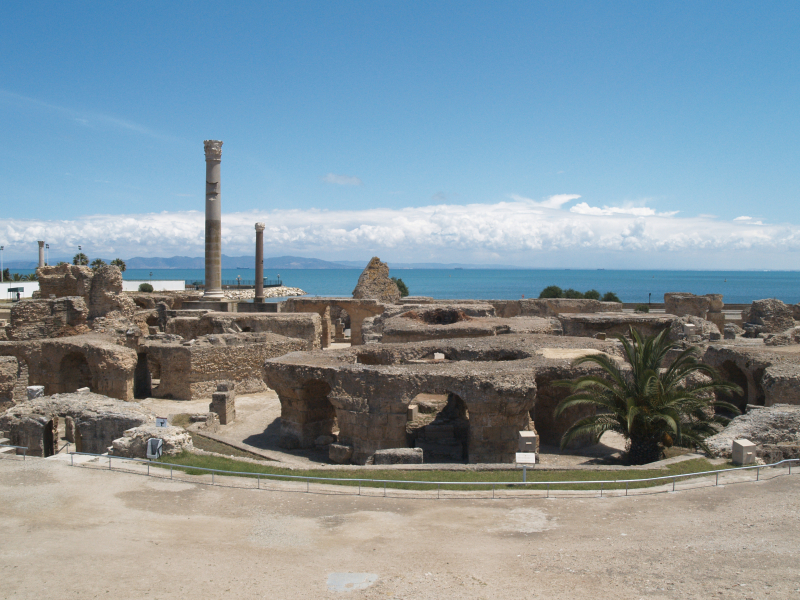
Source: Wikipedia Source: Ben Cherifa































